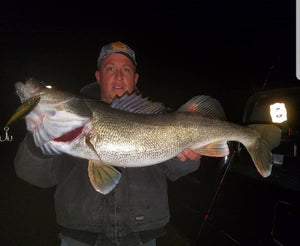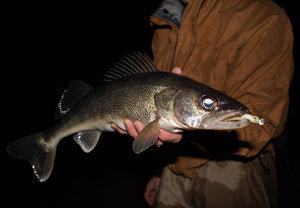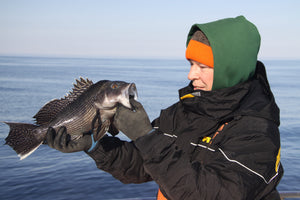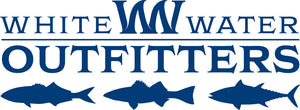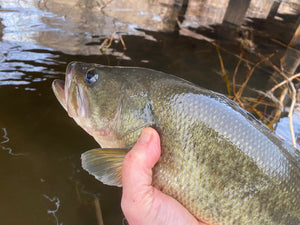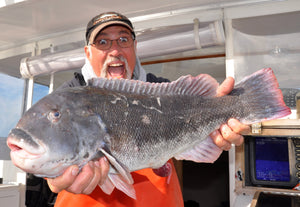Summer's Mixed Bag - Blast on the Bays
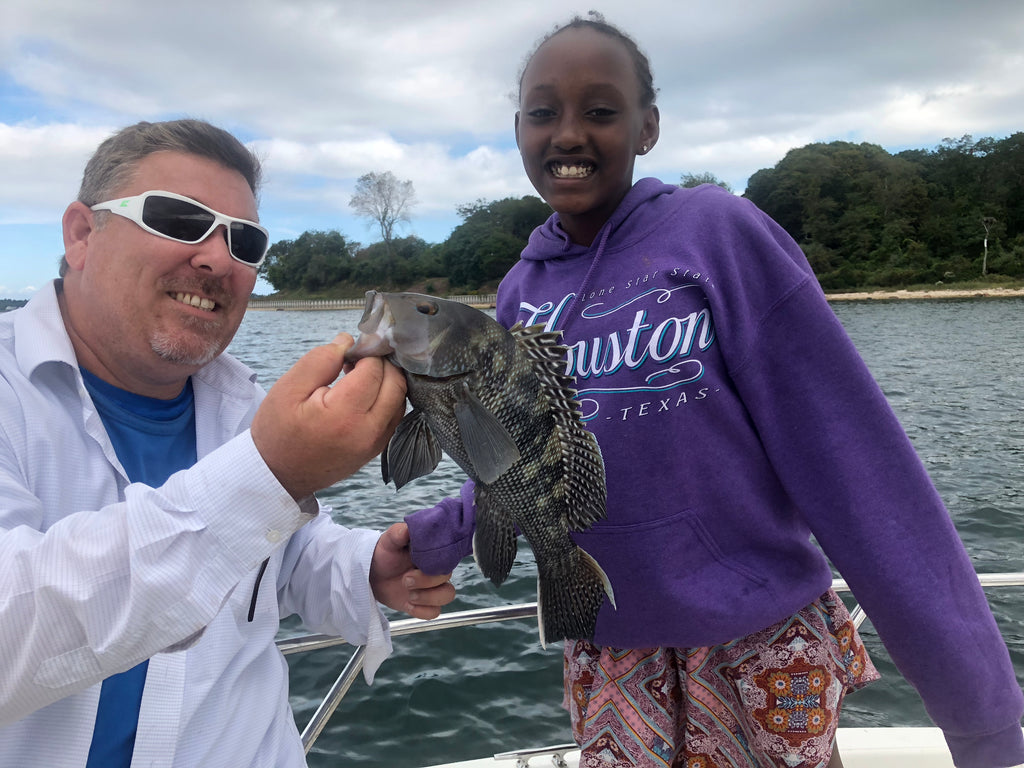
No doubt the thrill of targeting cow stripers, gorilla blues, doormat fluke and offshore brutes like tuna and sharks reign supreme among local sharpies. Still, there’s just something very enjoyable about the relaxing and simplistic nature of mixed-bag bottom fishing in our local bays. Maybe it’s that the odds of success and bringing home some fillets for dinner are high in this pursuit, or that mixed-bag trips see a wide variety in the catches and lend themselves well for relaxing and casual conversation while setting the hook. Whatever the reason, even the most ardent trophy hunter can enjoy some time unwinding on the bay from time to time.
With comfortable temperatures and plenty of summer-run fish already awaiting your offerings by the time July rolls around, now is the time to pull up just a short ride from port to survey bottom-fishing possibilities. The variety pack includes a shot at porgies, kingfish, school weaks, blowfish, sea bass, harbor blues, triggerfish, blue claw crabs and more, all of which can be caught together using the same basic baits and techniques. True, you’ll like toss back plenty of “shorts” during these bottom-fishing bay excursions, but odds are you’ll ice more than enough fillets to feed the family by the time your day is finished. Even better, since the action is available on almost any moving tidal stage - with an edge generally to the top of the flood or start of the ebb - you can fish when you have time without the need of waking up at dawn. Take the kids, too, because mixed-bag action is perfectly suited to building the enthusiasm and confidence of budding anglers.

OutdoorTom.com photo
KEY ON POCKETS AND EDGES
Deep water is the key to finding mixed-bag hot spots, but keep in mind that this is a relative term. . If you can find a 15- to 20-foot-deep hole in an area where the depth is generally a uniform ten feet or less, you've got a suitable place to anchor up and get started. If not, look for depressions that provide at least 8- to 12-foot depths in channels that border large, sandy flats. The main east/west channels of any of our South Shore bays are a good spot to begin prospecting. Simply locate the deepest pocket or drop-off along the edge and set up there. Another good option is to position yourself several hundred yards straight out front of where a major tidal creek or river empties into the bay. Here, small baitfish and shrimp that are flushed out of rivers and creeks on dropping tides settles to the bottom, creating a natural chum slick.
While there’s a tendency for bay-fishing fans to think the best catches always come from waters close to an inlet or from well-known hot spots, that's not necessarily the case with East End mixed bag fishing. Peconic Bay action, for example, can be found far west from where most anglers concentrate their efforts. The southeast corner of Robbins Island is well known as a mixed-bag hot spot in these waters, for example, but anglers willing to poke around a little bit can have the fish all to themselves at the southwest end of the island near Rogers Rock, or across the bay at North Race, outside Cutchogue Harbor, and deep inside Southold Bay where Cory and Richmond creeks drain out into 12- to 20-foot depths. Similar spots can be found in Shinnecock if you break out the charts and look to see where good drainage intersects deep water along the major channel edges. If you are not sure where to start, just ask our crew and they’ll point you in the right direction.

OutdoorTom.com Photo
GO LIGHT, HAVE FUN
Considering the nature of these trips, it makes sense to keep your tackle a little on the light side. Lightweight fluke setups, conventional freshwater bass outfits and 10- to 15-pound class spinning gear is ideal for this kind of fishing because they allow your quarry to give a decent account of itself but still have backbone enough to handle the occasional dinner-plate porgy, mini-doormat fluke, or 5-pound weakfish that might inhale your bait.
In terms of the terminal end, a high-low porgy rigs sporting a pair of beak-style bait-holder hooks and a two-ounce bank sinker is the standard. This rig will allow you to present baits right on the bottom and a foot or two above, and the gold beaks will stick just about any fish around and hold baits securely in place. Start with size 2 for the hooks but consider moving up to size 1 if catching larger fish as the bigger choice will discourage toss backs from getting hooked.

Photo by Felicia Scocozza
As for bait, carry at least two kinds when trying for mixed-bag catches. Use a clam strip or three-inch long piece of sandworm on the bottom point and a long, thin pennant of squid on the top. The clam or worm bait is intended for porgies, blowfish, sea bass, kingfish and the occasional passing school weak. The squid strip is used to draw the attention of school weaks, passing blues, fluke and any of the bottom feeders that feel inclined to lift their heads. It's amazing how both hooks can catch almost any species. It doesn’t hurt to bring along a couple of bucktails, poppers or tins, too, just in case the blues come cruising through or you discover a serious fluke or weakfish bite.
CHUM, CHUM, CHUM!
Two essentials you won't want to be without when mixed-bag fishing are a chum pot and a landing net. The chum pot is an especially valuable tool. While it is true that porgies and sea bass are generally school fish, a pot full of ground clam seems to tighten them into hungry, competitive packs. Other species, such as kingfish or weaks, travel alone or in small groups most of the time. Fish without chum and you'll pull a few of these each season. Fish with chum and you'll likely pick a few each trip.
As for the landing net, I've had eight- and ten-pound weaks, three-pound kingfish, chopper blues and fluke to seven pounds jump on my mixed bag baits. With the relatively small hooks that must be used to accommodate the smaller game, bringing along a net can be the difference between getting a lunker in the boat and watching it swim away – especially with the summer flatties and weakfish.
- Bryce Poyer

